Modelos operativos
En el informe del Estado Global de los Programas de Transferencias Monetarias de la CALP Network se identifican diferentes tipos de modelos operativos, incluyendo consorcios y alianzas, mecanismos de entrega de efectivo compartidos, entrega de efectivo a través de un único organismo, y la integración de sistemas.
“La estructura general a través de la cual los organismos trabajan conjuntamente… para llevar a cabo programas de transferencias monetarias… en la respuesta y el análisis de situaciones, en el diseño de programas y en su implementación”
Definición de trabajo de la CALP Network sobre un modelo operativo.
La ampliación de los PTM ofrece oportunidades para transformar la forma en que se entrega la ayuda humanitaria. Tiene implicaciones en el papel que desempeñan diferentes agencias dentro de diversos modelos operativos, y la posibilidad de vincular los modelos a los sistemas de protección social. También influirá en la naturaleza de las asociaciones con proveedores de tecnología y servicios financieros, y cómo los diferentes modelos interactúan con otras formas de asistencia, más allá del efectivo.
Prioridades actuales
Desde finales de 2016, la CALP Network ha coordinado un programa de aprendizaje para ayudar a responder las siguientes preguntas:
- ¿Qué modelos operativos están a disposición de las agencias encargadas de implementar los PTM?
- ¿Cómo mejoran los diferentes modelos la eficiencia, la eficacia y la rendición de cuentas de los PTM en diferentes contextos?
- ¿Qué modelos operativos son más apropiados y en qué contextos?
La CALP Network seguirá cotejando y difundiendo la base de evidencias para los modelos operativos.
La CALP Network es también un socio del consorcio Cash Monitoring, Evaluation, Accountability, and Learning Organizational Network (CAMEALEON), liderado por el Consejo Noruego para los Refugiados, que es responsable del monitoreo y evaluación independiente de las transferencias monetarias multipropósito (TMM) del Programa Mundial de Alimentos (PMA) en el Líbano. Esto incluye la investigación y análisis acerca del valor por dinero y la rendición de cuentas en el modelo operativo.
Contenido destacado

Operational Models: Accountability to affected people
Webinar

MEAL in Emerging Operational Models
Webinar

CTP Operational Models Analytical Framework
Guidelines and Tools
The State of the World’s Cash Report launched by the CALP Network in February 2018 highlights trends in the uptake of various operational models for the delivery of cash at scale in humanitarian response. Current decision making on the choice between these various operational models is highly influenced by context, and by the policies and approaches of donor agencies. Decision making on...
Últimos recursos

Buttressing Supply Chains Against Floods in Asia for Humanitarian Relief and Economic Recovery
Report
Floods are the most frequent category of disasters worldwide. Among all geographical regions, Asia has suffered the most. While there are several ongoing humanitarian efforts and initiatives, we believe there is a new opportunity to coordinate “last mile” humanitarian efforts in the event of a...

Logistics and Administration Guideline for Cash Based Interventions – Annexes
Guidelines and Tools
These annexes are designed to be used alongside the Logistics and Administration Guideline for Cash Based Interventions, which aims to support logisticians and administrators to successfully support cash based interventions (CBIs) and to help technical departments too. The annexes include: a the CALP...

Guidelines for Public Works Programmes: Cash‐, Voucher‐ and Food-for‐Work
Guidelines and Tools
The Food and Agriculture Organization of the United Nations (FAO) manages public works programmes to provide transfers to vulnerable, food-insecure and/or crisis-affected households in return for the provision of labour (particularly through labour-intensive construction and...
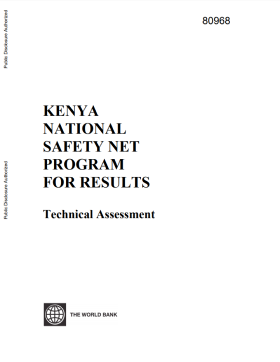
Technical Assessment of the Kenya National Safety Net Program for Results
Report
One of the priorities outlined in the National Social Protection Policy (NSPP) in Kenya, is the government’s ambition to enhance social assistance by developing the necessary institutions and strengthening operational systems while expanding the coverage of such programmes. To help realise this policy...
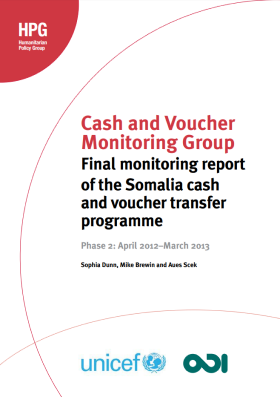
Final Monitoring Report of the Somalia Cash and Voucher Transfer Programme
Report
This report presents the findings of Phase 2 of a monitoring exercise of the Cash and Voucher Monitoring Group (CVMG), a unique partnership involving non-governmental organisations (NGOs) providing cash-based interventions in response to famine and humanitarian emergencies in South Central Somalia. It...
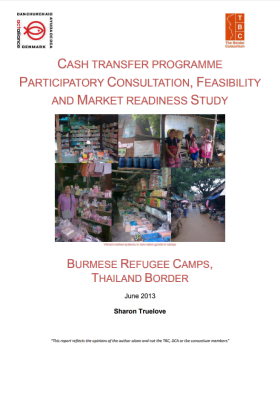
Cash Transfer Programme Participatory Consultation, Feasibility and Market Readiness Study: Burmese refugee camps, Thailand border
Report
This report is a participatory consultation, cash feasibility and market readiness study of the Burmese refugee camps on the Thailand border. It is a rapid, snap shot guide as to whether the conditions in two contrasting camps out of the full nine camps are conducive to a switch from the current ration...

Cash Emergency Preparedness (CEP) Assessment: Myanmar
Policy paper
Cash transfer programming (CTP) in emergencies is not new in Myanmar, with the first examples going back at least to Cyclone Nargis in 2009. CTP has also been used in humanitarian settings such as Kachin State. However, CTP is not yet being widely used for the current conflict context in Rakhine State due...
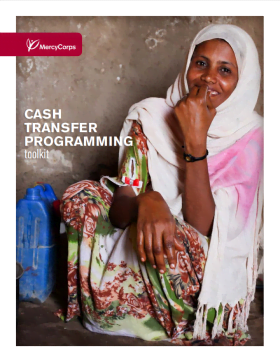
Cash Transfer Programming Toolkit
Guidelines and Tools
The Cash Transfer Programming (CTP) Toolkit is a basic guide to cash transfer programming in emergency response and early recovery settings. The publication is based upon best practiced and practical experience from Mercy Corps programmes. The Toolkit provides general guidance for CTP, as well as...

Cash Emergency Preparedness (CEP) Pilots
Guidelines and Tools
CEP guidelines and Key findings from pilot assessments

Child Safeguarding in Cash Transfer Programming
Guidelines and Tools
While cash transfers have become a key intervention in emergencies, they also pose increased and additional risks for beneficiaries, compared with other forms of assistance. Children are particularly vulnerable, and even more so in emergencies. The impact of cash transfer programming on children’s...
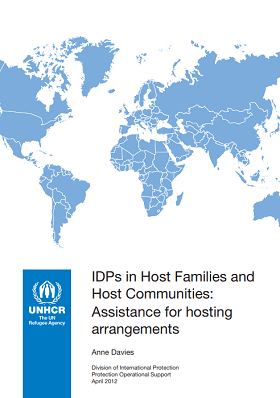
IDPs in Host Families and Host Communities: Assistance for Hosting Arrangements
Report
The phenomenon of internally displaced persons (IDPs) and refugees residing with host families is still relatively unexplored in comparison to what is known about IDPs and refugees living in camps. Of the nearly 14.7 million IDPs protected and assisted by UNHCR in 2010, an estimated 52% of the total live...

Impact Evaluation of Cash, Food Vouchers, and Food Transfers among Colombian Refugees and Poor Ecuadorians in Carchi and Sucumbíos
Report
This report is the final impact evaluation of the World Food Programme’s Food, Cash, and Voucher intervention and contains analysis on outcomes including food security, social capital, anemia, and gender issues. Due to the targeting of Colombian refuges and poor Ecuadorians in Northern Ecuador, it also...

Cash Transfers in Nairobi’s Slums
Report
In Kenya, a combination of factors led to the food crisis of 2008–9, which put around 9.5 million people at risk of starvation. About 4.1 million of those affected were living in informal settlements (slums) in the capital, Nairobi. Oxfam and Concern Worldwide developed a joint programme to address...

Examining Differences in the Effectiveness and Impacts of Vouchers and Unconditional Cash Transfers
Report
The objective of this study is to examine the differences in the effectiveness and impacts of vouchers versus unconditional cash transfers in the Bushani camp of the Masisi territory of the Democratic Republic of Congo. As part of this research, the study team collected household data from over...

Market Information and Food Insecurity Response Analysis (MIFIRA) Framework Course
Guidelines and Tools
Access Course Here This course outlines the rationale for “response analysis” and introduces a field-tested, systematic approach to this emergent activity. The Market Information and Food Insecurity Response Analysis (MIFIRA) framework provides a logically sequenced set of questions that help...

Emergency Food Security and Livelihoods (EFSL) 48-hour Facilitator’s Materials
Guidelines and Tools
Developed by Oxfam and supporting ECB agencies, the EFSL training materials can be used to train participants to confidently apply the ‘48-hour assessment tool’ to assess the impact of a shock/hazard on an affected population’s food security and livelihoods. The Facilitator Materials include session...

Cash transfer programming in urban emergencies: a toolkit for practitioners
Guidelines and Tools
In recognition of the increasing urban populations around the world and their increasing vulnerability to disasters, the the CALP Network endeavored to investigate the current status and impact of urban emergency response programs that utilise cash transfer programming. This study aims to better...

Cash Transfer Programming in Urban Emergencies: Tools (Annex 2)
Guidelines and Tools
This file contains the following tools referenced as Annex 2 of the the CALP Network Urban Toolkit:
1. Sample Focus Group Discussion Questionnaire to Establish Urban-Specific Vulnerability Criteria
2. Sample Urban Household Survey
3. Template in PowerPoint of Commodity Market Map
4. Template in PowerPoint...
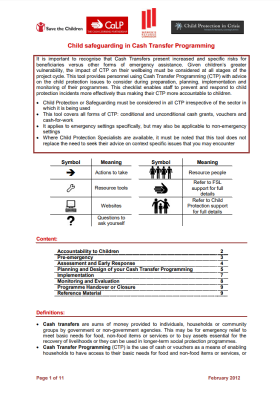
Child Safeguarding in Cash Transfer Programming Tool
Guidelines and Tools
It is important to recognise that Cash Transfers present increased and specific risks for beneficiaries versus other forms of emergency assistance. Given children’s greater vulnerability, the impact of CTP on their wellbeing must be considered at all stages of the project cycle. This tool provides...
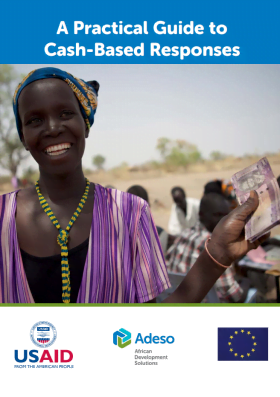
A Practical Guide to Cash-Based Response
Guidelines and Tools
A Practical Guide to Cash-based Responses is a manual developed by Adeso to share the organisation’s experience in developing and implementing appropriate cash-based responses. The manual highlights some practical problems that are faced by implementation teams around the world and it is intended to...


